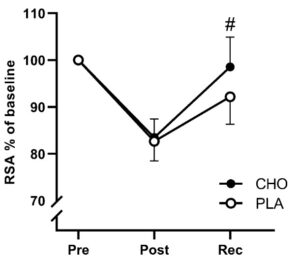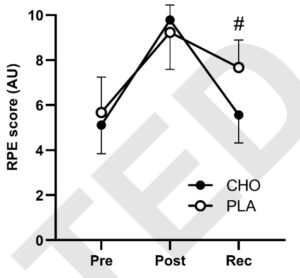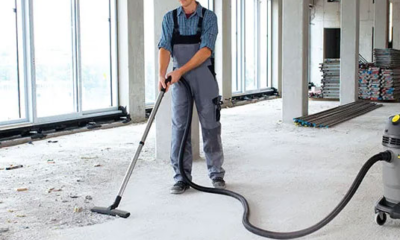News
Why Carbs Are So Important for Recovery
Published
2 years agoon
By
Robert King
“], “filter”: { “nextExceptions”: “img, blockquote, div”, “nextContainsExceptions”: “img, blockquote”} }”>
Back in 2010, a journal article in PLOS Computational Biology caused a stir in the running world. It offered a comprehensive model of how you store carbohydrates in your body and how quickly you burn them during a marathon, in order to calculate how much extra you need to consume. “Marathon runners need never ‘hit the wall’ again,” media reports enthused.
The basic assumption behind this model was that you can run happily when you’ve got carbs in the tank, but you’ll grind to a halt—or at least hit the wall and slow down dramatically—when you run out. Of course, there are lots of other factors to consider, like microscopic muscle damage that accumulates during long runs. But some scientists have argued that there’s a more fundamental problem with this assumption, which is that you start getting tired long before your carbohydrate fuel tank is empty—a counterintuitive idea, equivalent to your car automatically slowing down when the tank is still half-full.
This is the idea addressed by a new study in Medicine & Science in Sports & Exercise, from a team of researchers in Denmark led by Jeppe Vigh-Larsen of Aarhus University. In the world of muscle physiology, Scandinavian researchers are famous for their rigorous experiments, and this one is no exception: the study’s volunteers underwent a series of protocols that included four muscle biopsies—that is, snipping out a piece of thigh muscle for detailed analysis—in one day. The payoff is a remarkable look at what’s happening inside your muscles as you exhaust and then recharge them.
RELATED: The Science of Carbohydrate and Protein Supplementation for Minimizing Muscle Damage
After a bunch of initial testing, the volunteers did an exhausting interval workout on exercise bikes to deplete the glycogen (i.e. stored carbohydrate) in their leg muscles. Afterwards, they rested for five hours while consuming high-carbohydrate recovery bars and drinks, or placebo versions with low carbohydrates. Then they did more exercise tests: six sets of five-second all-out sprints, plus a two-minute test at fixed intensity to measure perceived exertion.
Here’s what the muscle biopsies revealed about the amount of carbohydrate stored in the subjects’ thigh muscles before the interval workout (Pre), after the interval workout (Post), and after five hours of recovery, right before the all-out sprints (Rec). Open circles are the placebo group, filled circles are the high-carb group:

As planned, the interval workout drained the leg muscles of carbohydrate. The high-carb drinks and bars partly restored those lost carbohydrates; the low-carb group also replenished some of those stores, but to a lesser extent.
Here’s how the all-out sprints went for the high-carb (CHO) and placebo (PLA) groups, expressed as a percentage of their baseline repeated sprint ability (RSA):

Their sprinting suffered after the exhausting interval workout, which is no surprise. Five hours later, it had partly recovered—but not as much in the placebo group as in the high-carb group.
Similarly, here’s the rating of perceived exertion (RPE), on a scale of 1 to 10, for the two-minute ride at a predetermined power. It got harder when they were tired and then easier after they recovered—but again with greater recovery for the high-carb group.

Overall, the results agree with previous data suggesting that performance suffers when your muscles have less than about 250-300 mmol/kg of carbohydrate, which is somewhere around half-full. Why does this happen? The paper goes pretty deep into the intricacies of muscle physiology, but there are a couple of points that stood out to me.
The first point is that there’s a difference between how much carbohydrate is available overall in a muscle versus what’s available to an individual muscle fiber. If you’ve got 250 mmol/kg out of a maximum capacity of 500 mmol/kg, your muscles are half-full. But that might mean that some fibers are mostly full while others are mostly empty. And indeed, that’s what the researchers found: in the low-carb group, 19 percent of individual slow-twitch fibers and 4 percent of fast-twitch were depleted to less than 20 percent of their initial carb levels. In comparison, no individual fibers were that depleted in the high-carb group. When you do all-out exercise, like six-second sprints or sprinting at the end of a long race or a soccer game, you need all your muscle fibers to fire. If some are empty, then your performance will be compromised even if there’s carbohydrate in the fiber next door.
And you can even zoom in a little further, to consider how glycogen is stored within muscle fibers. There are three main places where you’ll find glycogen in a muscle fiber, called (since you asked) subsarcolemmal, intermyofibrillar, and intramyofibrillar. The last one, known as intra glycogen for short, has been linked in previous research to how well muscle fibers contract. Sure enough, in the low-carb group, roughly half the individual fibers were depleted to less than 20 percent of their baseline levels of intra glycogen—and each individual’s level of intra glycogen depletion was correlated with how much worse they did on the repeated sprint test. That suggests that a muscle fiber may be compromised even if it has plenty of glycogen left, if that glycogen isn’t in the right place within the fiber.
RELATED: More Carbs Correlates With Less GI Distress in Runners
All of this biochemistry is in service of a simple point, which is that there’s a big grey area between the extremes of being fully fueled and bonking. Most of the time I don’t really worry about this, because I train once a day, and glycogen levels generally bounce back within about 20 to 24 hours as long as you’re eating a reasonable diet, without needing to stress about post-workout refueling windows and details like that. But there are times when it matters. For example, I typically play basketball on Friday evenings, then meet friends for a tempo run on Saturday mornings. The data suggests that my legs will still be partly carb-depleted the next morning, so I refuel very aggressively when I get home from my basketball game. I probably can’t get the overall tank back to full, but—trust me—I need as many individual fibers as possible to be firing.
For more Sweat Science, join me on Twitter and Facebook, sign up for the email newsletter, and check out my book Endure: Mind, Body, and the Curiously Elastic Limits of Human Performance.
Recent News


Instagram Story Viewer: Shaping Social Media!
Could you think of Instagram without stories? Even though Instagram Stories were introduced not so long ago, in 2016, they...


Top Benefits of Using a Phone Appending Platform for Batch Data Updates
In the world of data-driven marketing, having access to accurate and current contact information is essential for successful customer outreach....


3 Tips for Dressing Perfectly for Special Occasions
Dressing for special occasions can sometimes be a stressful and overwhelming process, especially for women. Whether you’re attending a wedding,...


Maximise Your Hunting Success with Dive Bomb Industries Decoys
When it comes to hunting, there’s no such thing as too much preparation. Hunters understand that the right equipment can...


Castle App Free Download — Updated 2024 Version
What is Castle App? Castle App, a stream app developed for streaming media content, makes entertainment effortless by giving clients...


How to get a duplicate RC book for your vehicle: A step-by-step guide
If you have lost or damaged your vehicle’s registration certificate, you must be tense and under stress. But getting a...


Enhancing Property Value Through Professional Builders Cleaning Services in the UK
Construction and renovation projects make a ton of residue, garbage, and soil, passing on a requirement for proficient cleaning to...


Saturn in Sidereal Pisces-March 28,2024 to February 21st 2028 by Jade Luna
I really wanted a female president governing this cycle but the chart of America would choose the hardest path, not...


Top 5 Super Clone Rolex for Women
Super clone Rolex watches are incredibly detailed knock-offs of popular Rolex models, crafted to look and feel just like the...


Transforming Dreams into Reality: A Success Story of Purchase Amazon Seller Account
Purchase Amazon Seller Account: In the fast-paced world of e-commerce, many aspiring entrepreneurs dream of starting their own business. However,...
